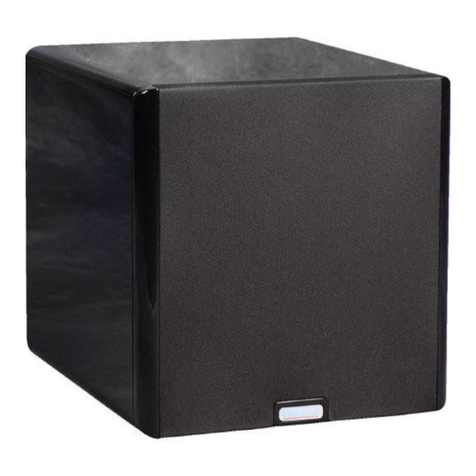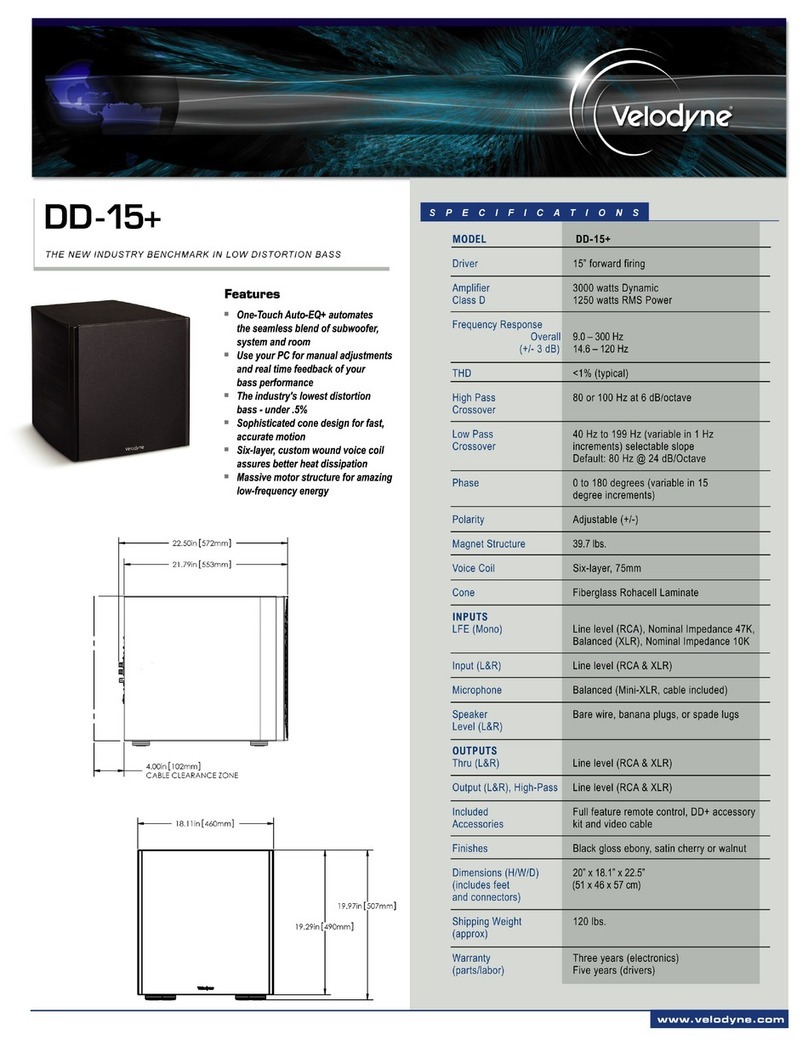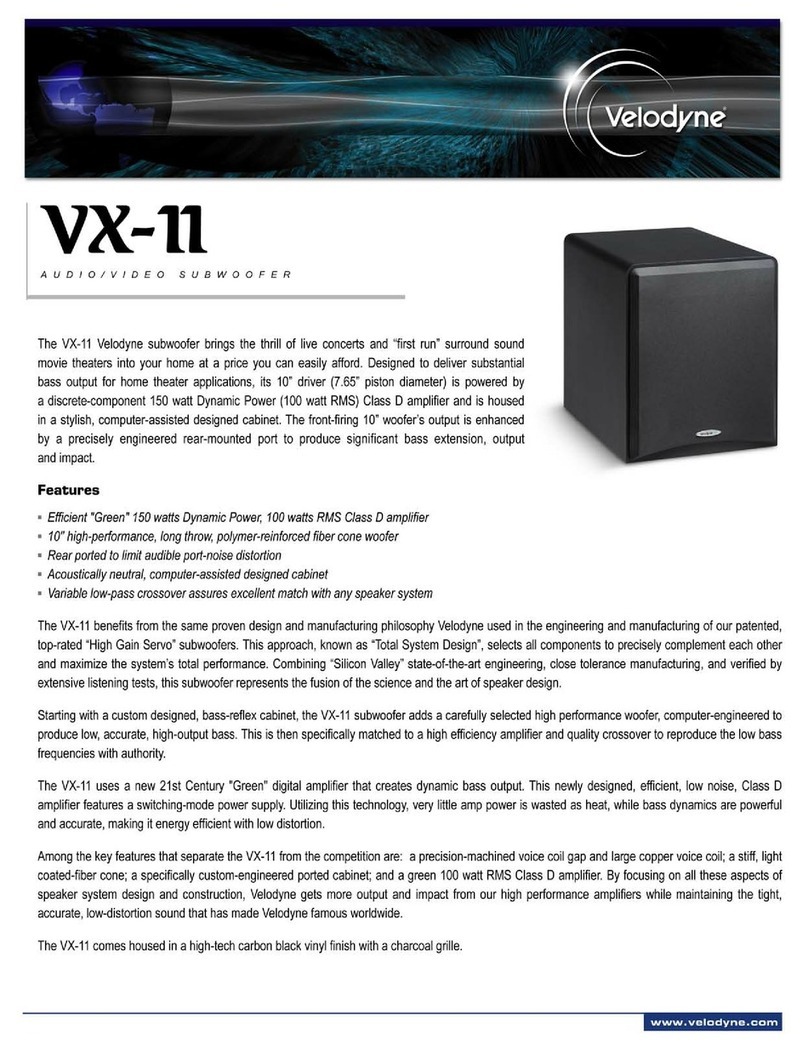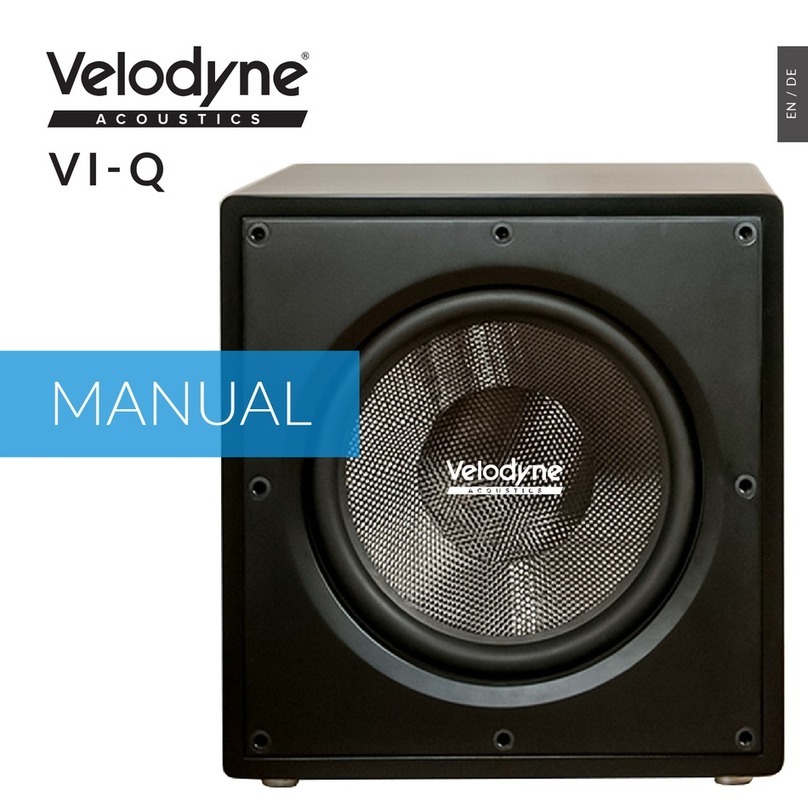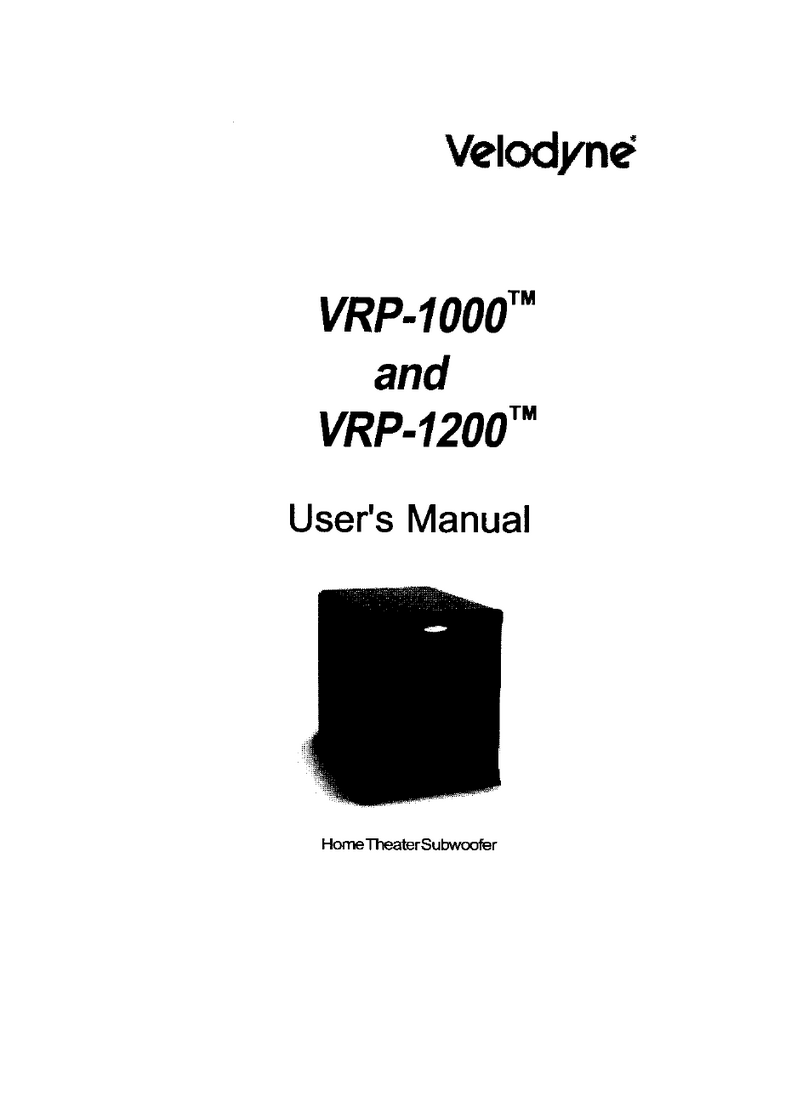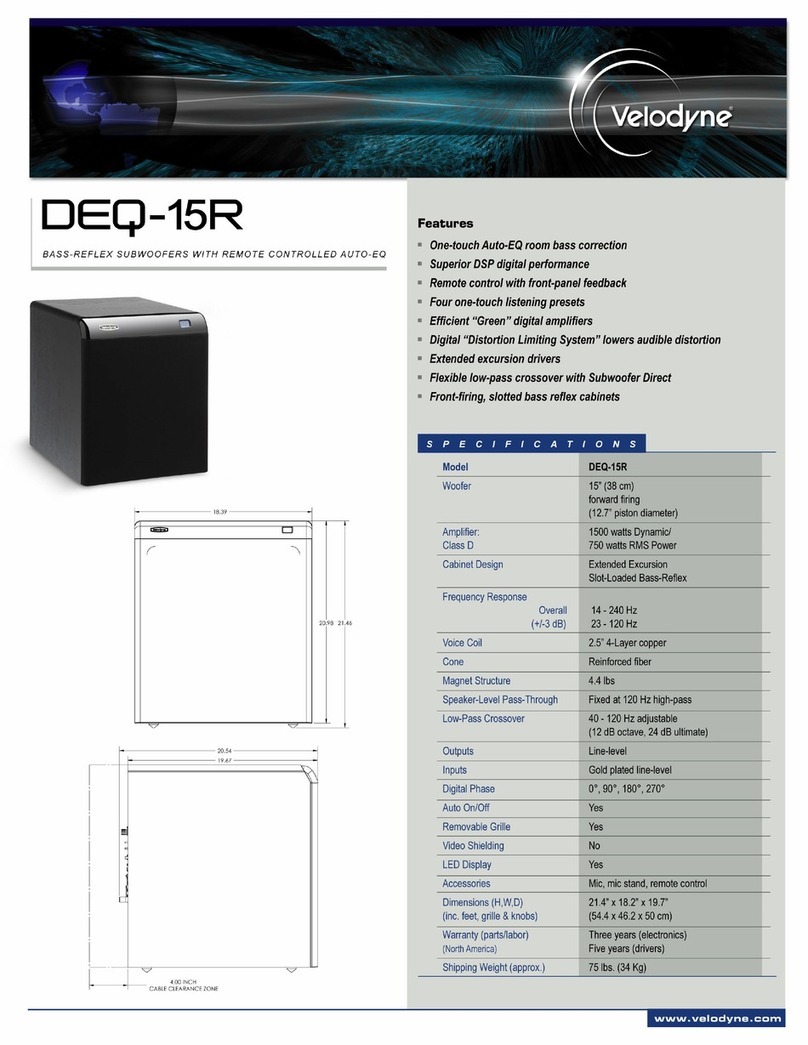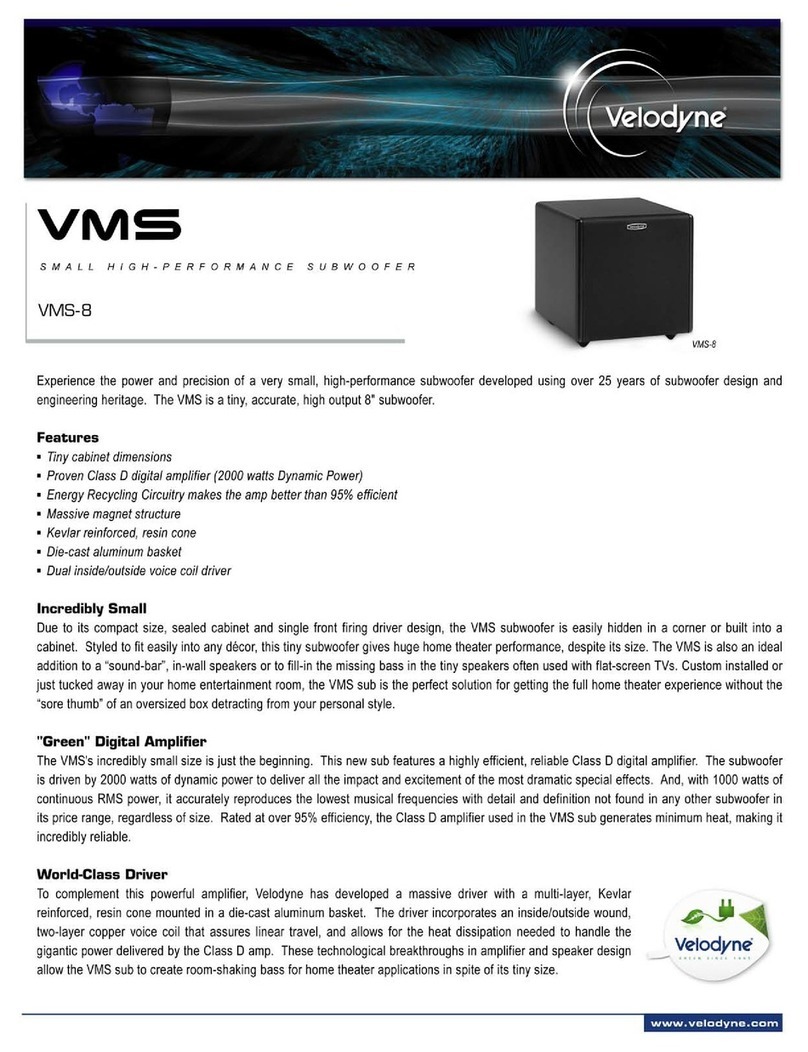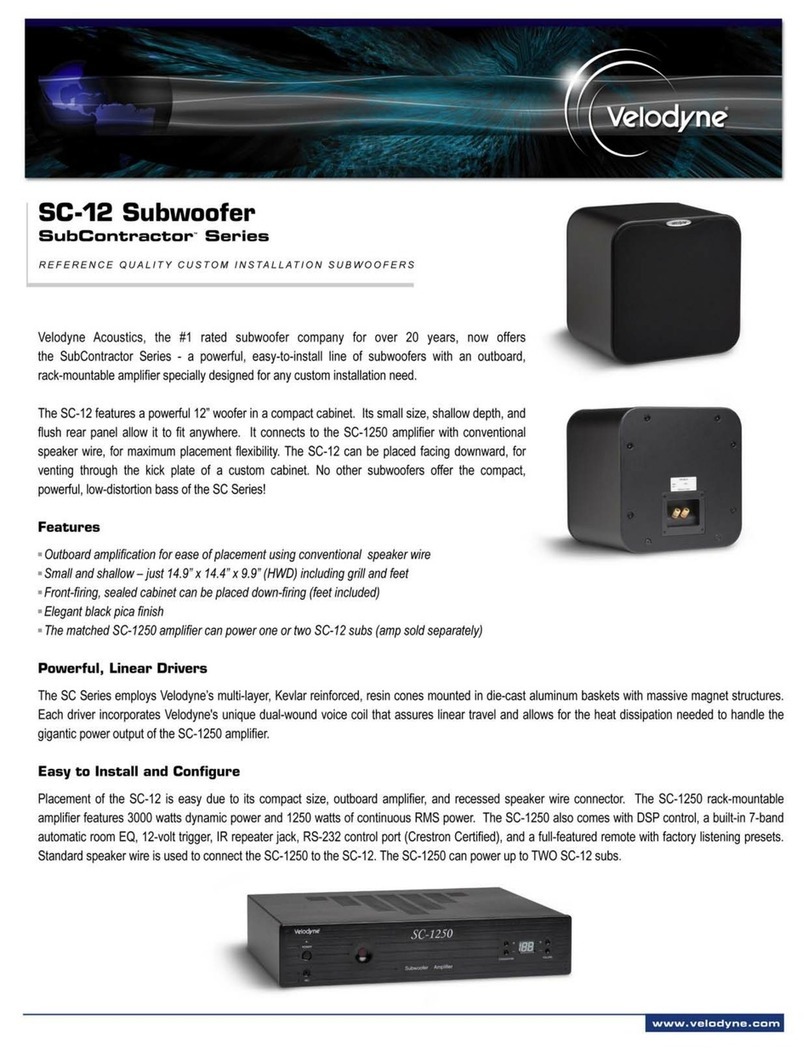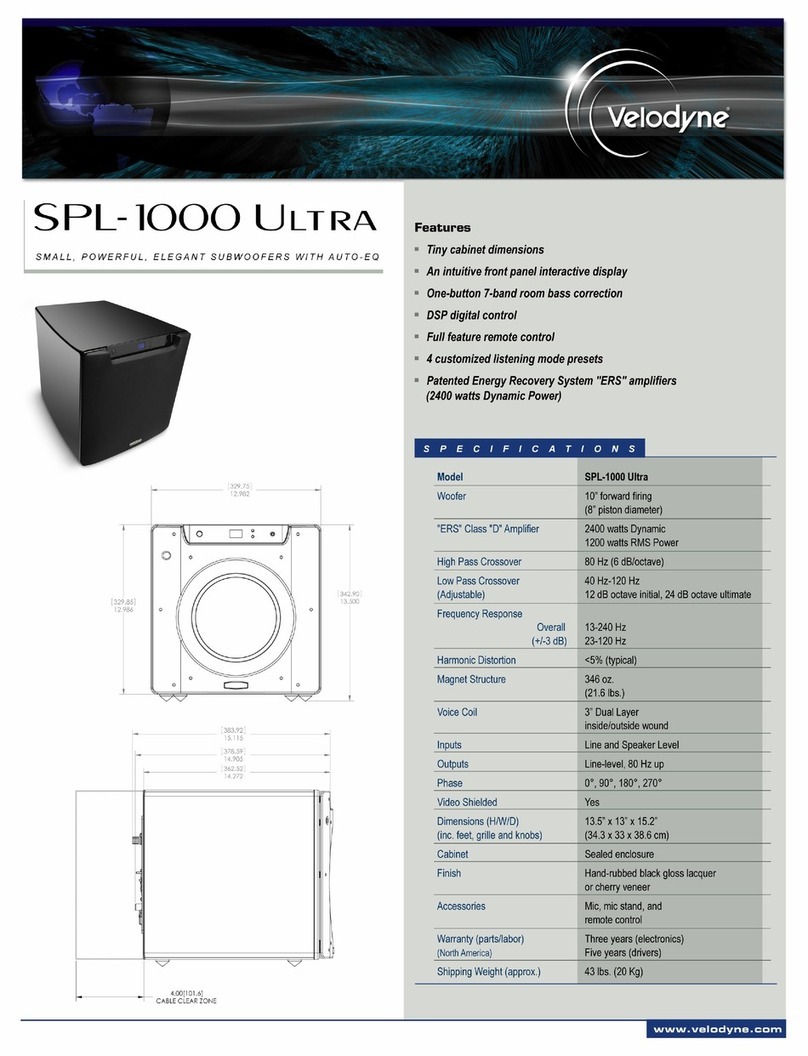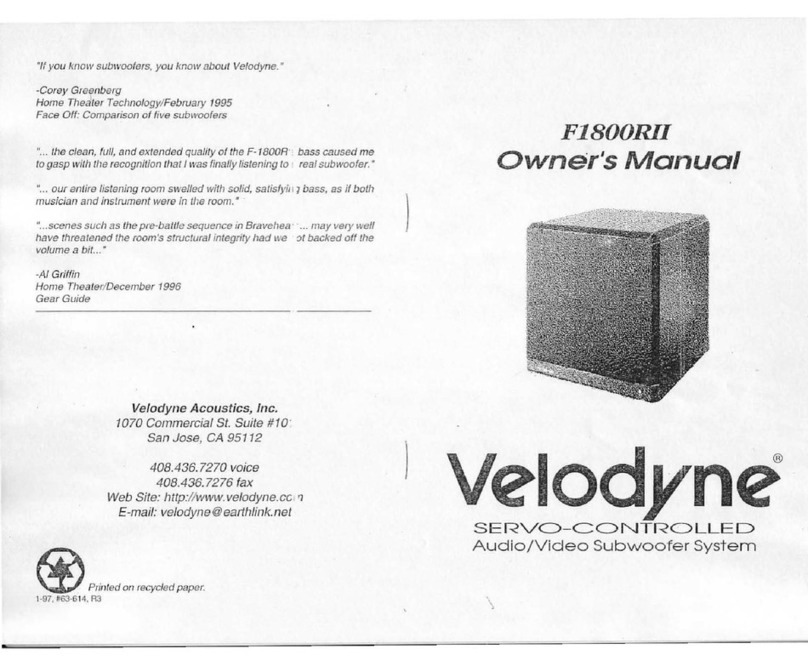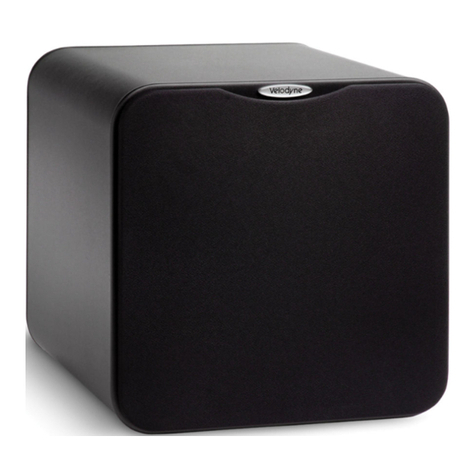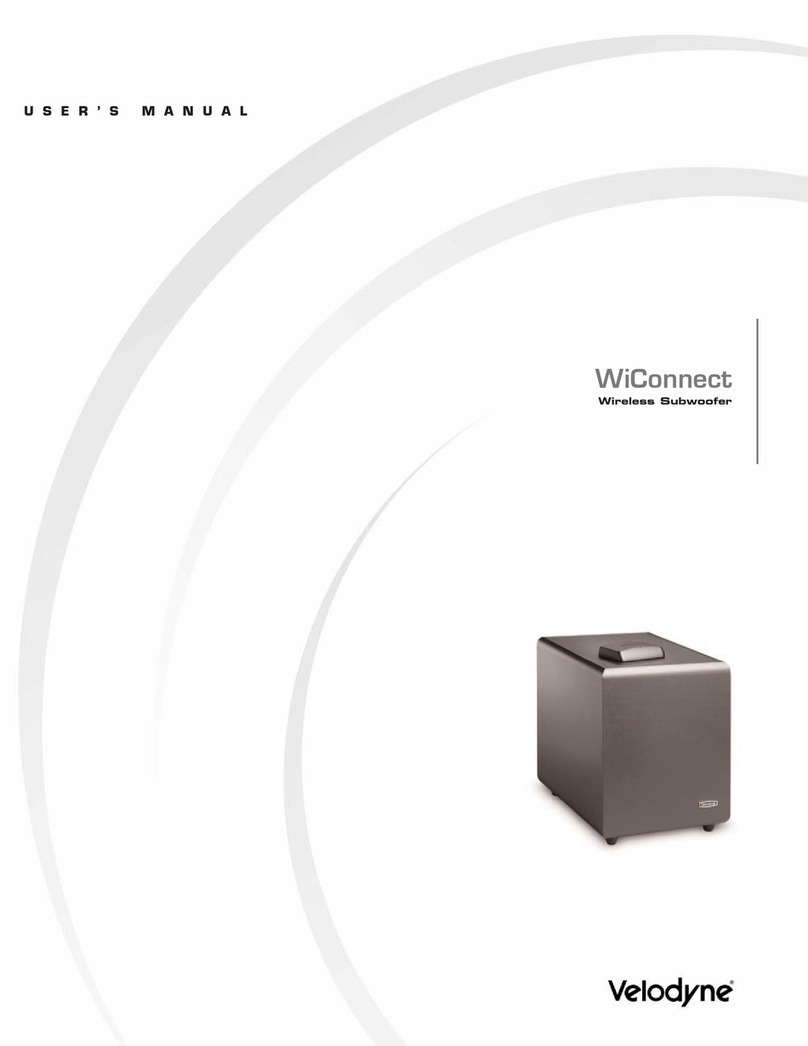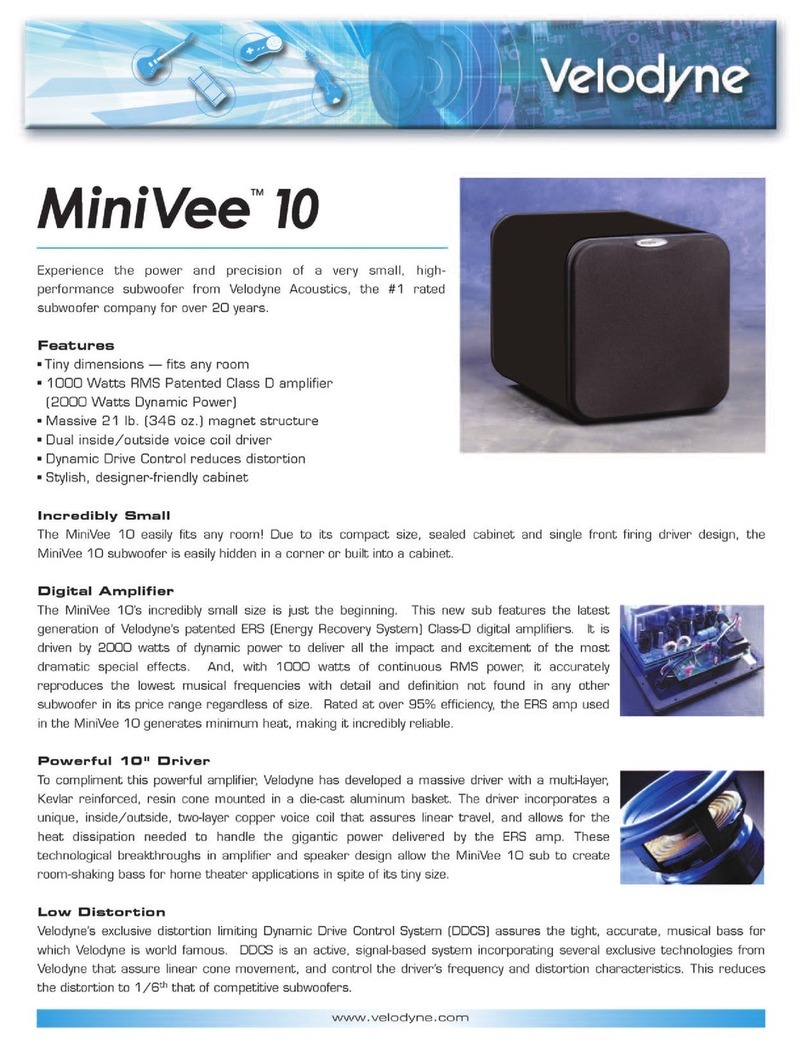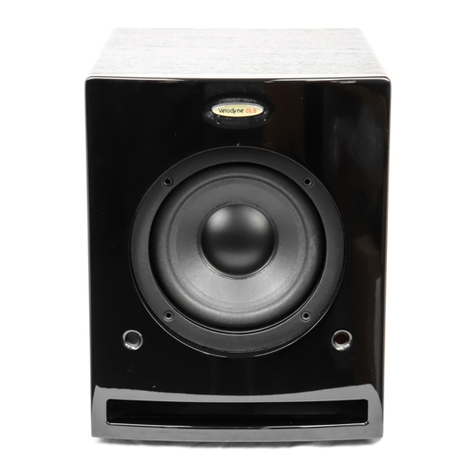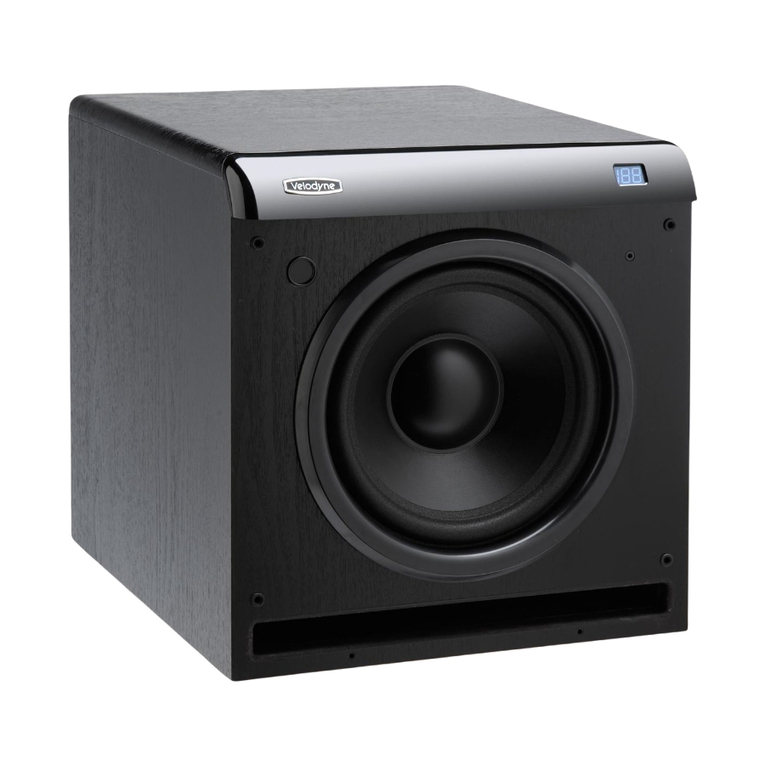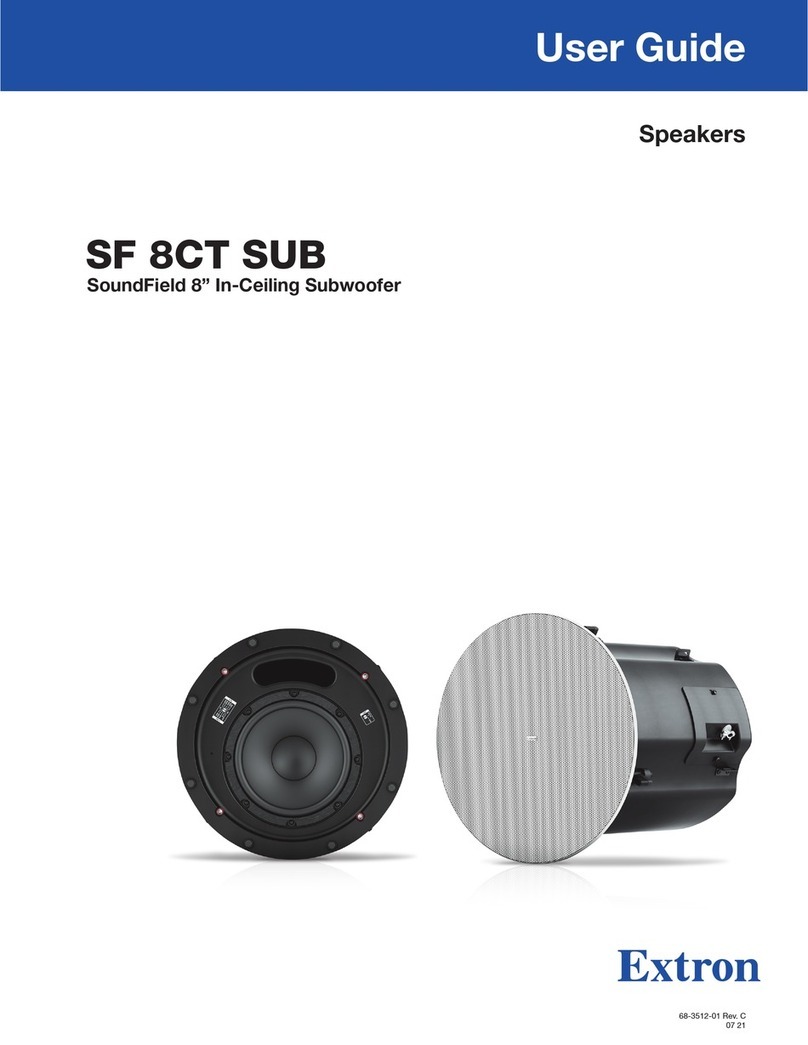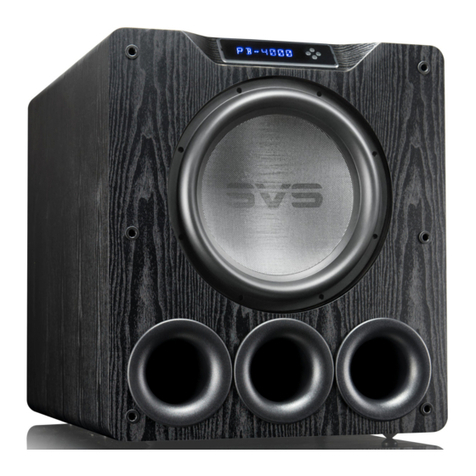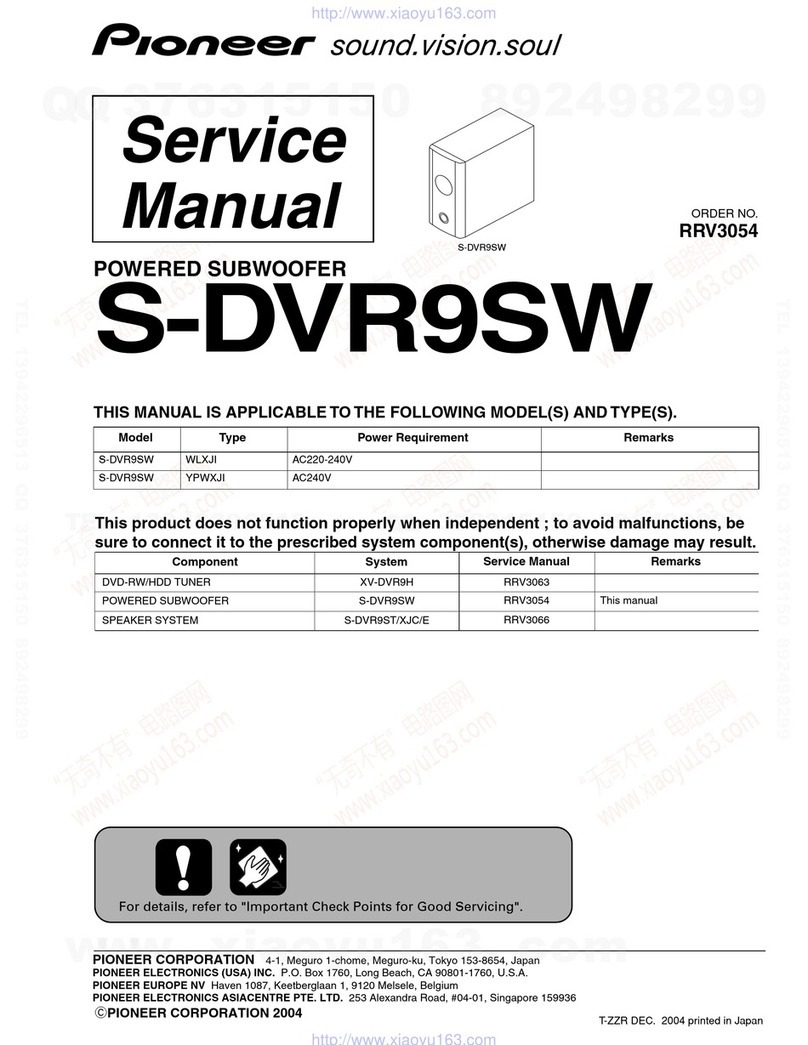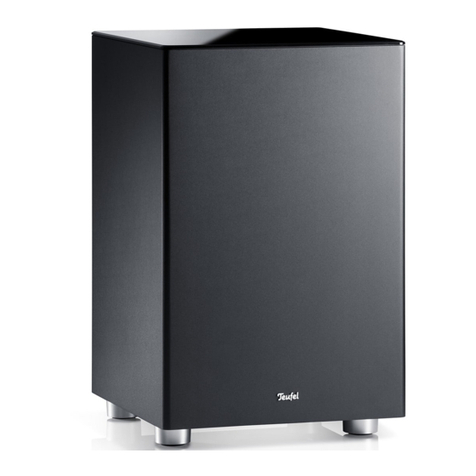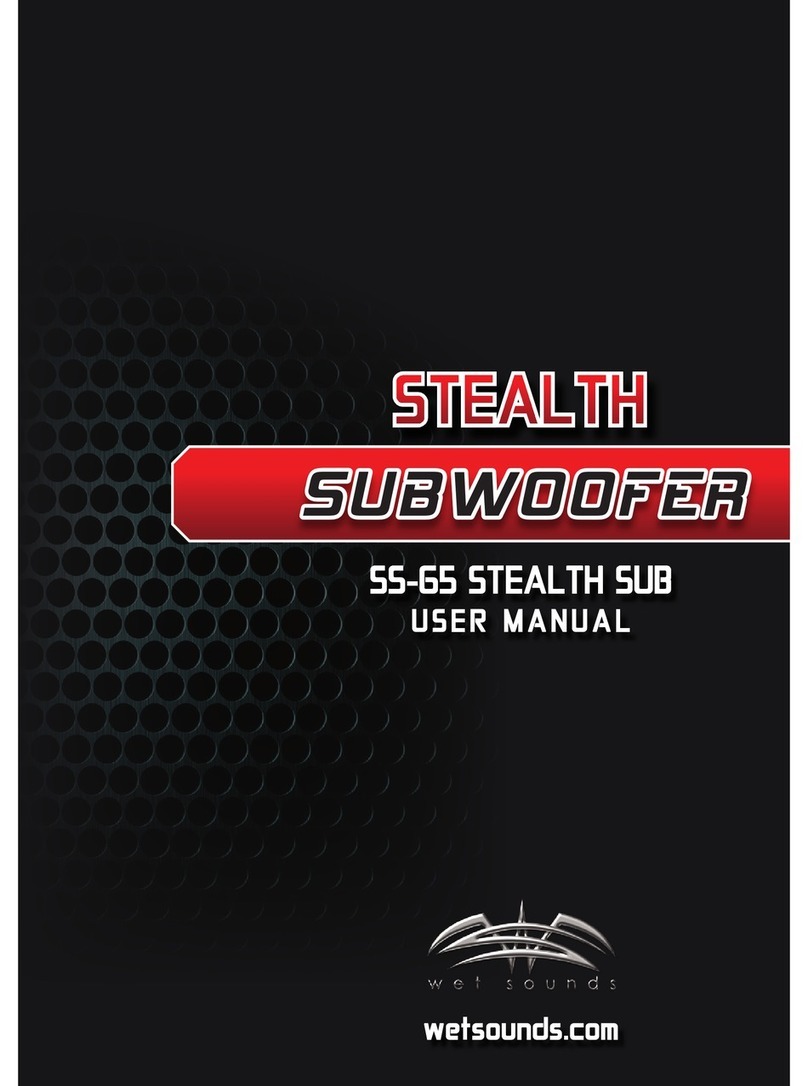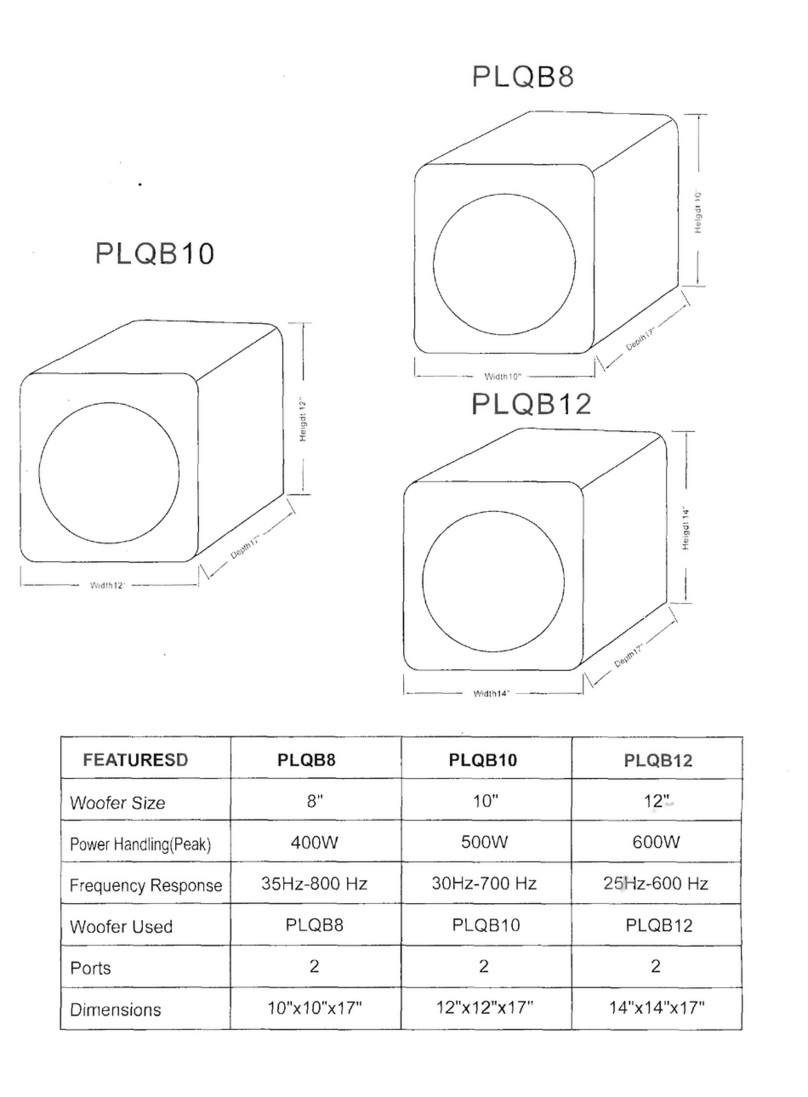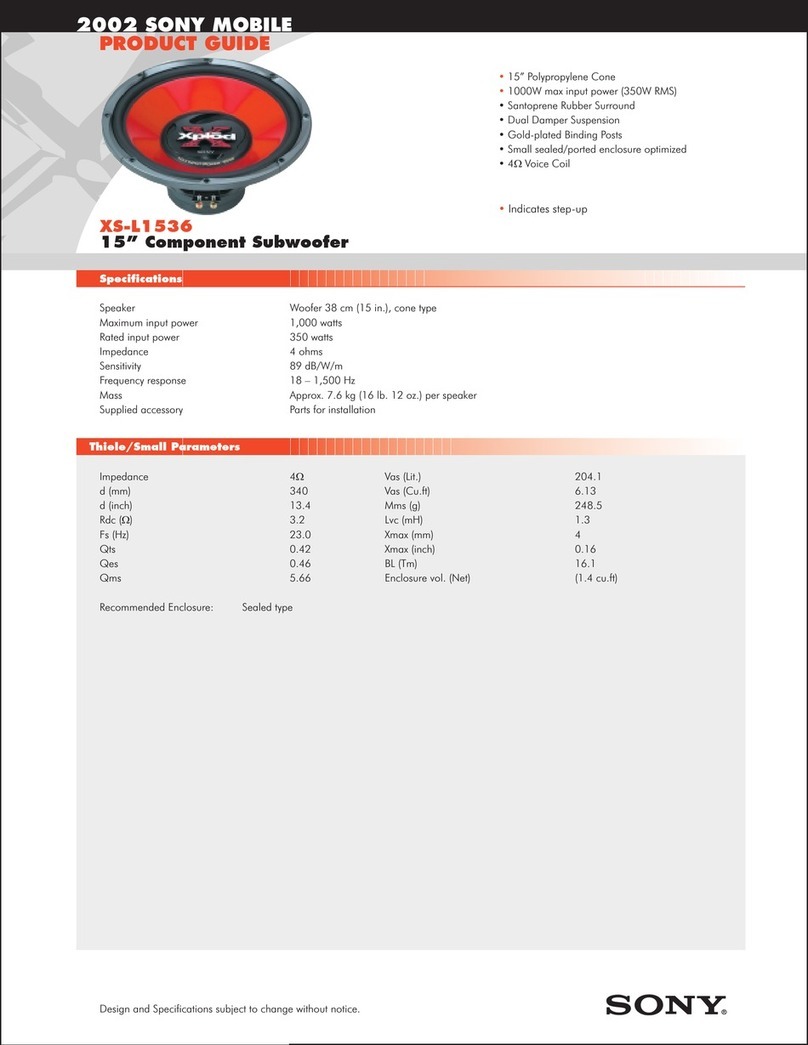40
|
Australian Hi-Fi40
|
Australian Hi-Fi
equipment review
though it also has an equally large number
with infinite baffle enclosures! Indeed this
time around it was my turn to be surprised by
the sheer number of models Velodyne has in
its range—it’s quite incredible!
What is also incredible is that the CHT-12Q
has Velodyne’s auto-equalisation circuitry,
which automatically adapts the frequency
response of the subwoofer for best results in
your room. To use it, all you have to do is
position Velodyne’s tiny microphone at your
usual listening position, using the miniature
microphone stand that’s also supplied, and
plug the other end of the microphone lead
into the mini socket on the front panel of the
subwoofer that I mentioned earlier (which
is so much more sensible than putting the
socket on the rear, as was the case with earlier
Velodyne subwoofers!). Then—after making
sure the CHT-12Q is switched on, all you
have to do is press the ‘EQ’ button on the
remote. That’s it. In a few moments you’ll
hear the first of a series of frequency sweeps
and, after 40 seconds or so, the job is done
and you simply disconnect the microphone,
lead and microphone stand and pack them all
away for if you ever need to use them again.
I should note that you don’t have to use the
auto-tuning if you don’t want to. If you just
plug the CHT-12Q into mains power and
connect the LFE output of your AV receiver
to the LFE input on the rear panel of the
CHT-12Q, you can be up-and-running with
just a flick of the on/off switch and a push of
the volume control. However, the simplicity
of the calibration procedure is such that it
will only take a few extra minutes, so why
wouldn’t you?
Unfortunately, although the inbuilt
calibration can match the CHT-12Q to your
room, it can’t match its output to that of
your main speakers or to your AV receiver.
So you will still have to set the CHT-12Q’s
high-pass control and volume control by
ear—as you would with all other subwoofers.
If your AV receiver is a recent model and has
its own inbuilt calibration, you can use this
to aid set-up. However, note that you must
always run the CHT-12Q calibration BEFORE
you run your AV receiver’s calibration. (Also,
since most AV receivers have only a limited
calibration range, it’s still better to set up by
ear first, and then run the two automated
calibration routines.
When the Velodyne equalises itself, it does
so for the flattest response, which it then makes
available ‘au naturel’ in the Jazz/Classical
preset position. This ensures tight, clean,
extended—and perhaps most importantly—
accurate bass response, but when you’re
playing video games, or watching an action
movie, you don’t necessarily want accurate
bass, you want ‘oomph’ and excitement!
This is where the other three presets come in:
‘Movies’, ‘R&B/Rock’ and ‘Games’. The titles
are self-explanatory, but of course you can use
any setting you like, no matter what you’re
doing. If you’re playing a video game and
you think the game sounds the best when
you’re using the ‘Movies’ preset, then use the
‘Movies’ preset! There are no rules.
The CHT-12Q’s driver has a cone of
reinforced fibre that’s driven by a two-layer
copper voice coil. I measured the cone as
being 330mm in diameter overall, a little
larger than claimed by Velodyne, but the
Theile/Small diameter is 258mm, which
gives a cone area (Sd) of 523cm². The bass
reflex slot beneath measures 345×31mm.
The amplifier plate on the rear has the usual
rotary low-pass crossover filter, but it works
‘backwards’ to usual, so that the subwoofer
operates at its maximum bandwidth (120Hz)
when the control is fully counter-clockwise,
and at its minimum (40Hz) when it’s fully
clockwise. The crossover slope is 12dB/octave
(24dB/octave ultimate). The volume control is
far from conventional, being push-button(s)
rather than rotary. (However the only time I
can imagine you would use the push-buttons
is if you have mislaid the remote or let the
batteries run flat.) Below the volume control
is a two-position slider switch marked ‘Stand-
by’ and ‘Always On’ that self-evidently
Velodyne obviously intends its CHT-Q
Series subwoofers to be used in home theatre
applications. This is not mere supposition on
my part: it’s printed right there on the front
of the Owners’ Manual: ‘Remote Controlled
Home Theatre Subwoofers.’ However, proving
that you can have your cake and eat it too, I
found that I would be more than happy to use
Velodyne’s CHT-12Q in an audiophile-quality
home hi-fi system.
The Equipment
Upon opening the packaging, and placing
this relatively small subwoofer (and I mean
small—it’s only 457mm high, 381mm wide
and 495mm deep) on the floor, the very first
thing I did was remove the front grille, be-
neath which I found something surprising.
No, it wasn’t the input for a microphone—I
quite expected that. What was unexpected
was the slot at the bottom of the front panel.
I had been labouring under the impression
that all Velodyne’s subwoofers used infinite
baffle enclosures, yet here was the CHT-12Q
with a bass reflex enclosure… though I noted
when reading the specifications that Velo-
dyne obviously prefers to call it ‘slot-loaded
bass reflex.’
I was actually quite pleased about the bass
reflex port, because although infinite baffle
(sealed) subwoofers have extraordinarily
smooth and extended bass, bass reflex
subwoofers are far more efficient (because
they harness the energy from the rear of the
cone that is completely lost in an infinite
baffle design) and because I personally think
the bass from a reflex enclosure has a little
more bottom-end ‘punch’—especially on
transients—which I particularly like, and
therefore I am prepared to trade this against
a slight loss of deep bass extension. However,
when I did a quick check-up via the miracle
of the Internet, it transpired that I was
labouring under a mis-impression regarding
Velodyne using only infinite baffle, because
Velodyne actually has a very large number
of subwoofers with bass reflex enclosures…
Velodyne
CHT-12Q
Subwoofer

